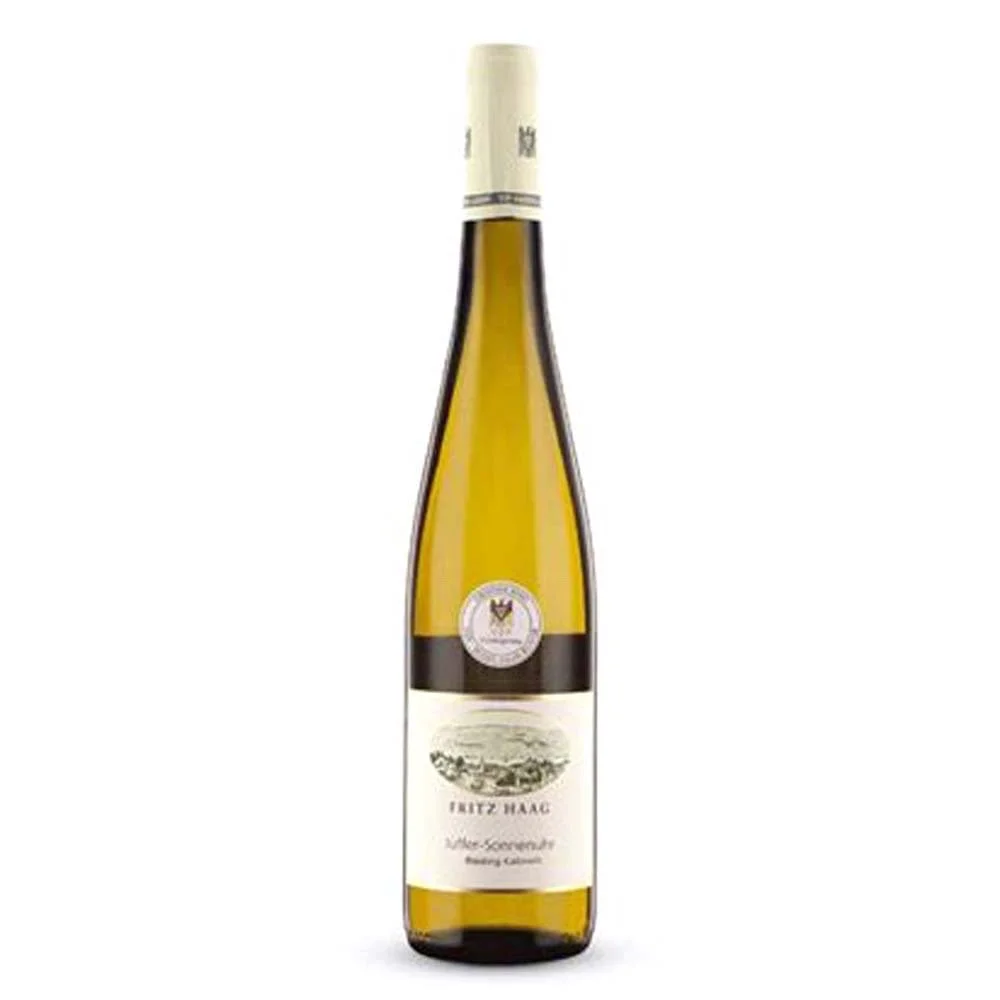GERMAN PRÄDIKATSWEIN
Precision, Purity, and Sweetness by Design
Germany’s Prädikatswein system is one of the most structured and expressive classifications for sweet wines in the world. Based on grape ripeness at harvest—not sugar added later—these wines range from light and juicy to rich and ageworthy. The sweet styles of Prädikatswein—Kabinett, Spätlese, Auslese, Beerenauslese, Trockenbeerenauslese, and Eiswein—showcase the finesse of German winemaking: racy acidity, pristine fruit, and low alcohol that lets sweetness shine without heaviness.
Key Characteristics
German sweet wines are often defined by their high acidity, low alcohol, and layered aromatics. The sweetness is natural and unfortified, with each tier offering a different degree of richness and complexity.
Style
Unfortified, naturally sweet white wines classified by grape ripeness at harvest, not by sugar added or left in the wine. Often Riesling-based, though other varieties are used
Body
Light to full, depending on classification
Acidity
High
Primary Grapes
Riesling (dominant), Silvaner, Scheurebe, Gewürztraminer
Typical Flavors
Green apple, white peach, apricot, lime, honey, jasmine, orange blossom, petrol (with age), candied citrus, botrytis spice (in BA/TBA)
Origin & History
Germany’s vineyard classification system began in the 18th century and was formalized in 1971. Prädikatswein—meaning “wine of distinction”—categorizes wines by must weight (sugar in the juice at harvest). It’s a measure of ripeness, not final sweetness, though most wines in the higher tiers are sweet. The system reflects Germany’s cool-climate precision and commitment to balancing sugar with electric acidity.
How It’s Made
Grapes are picked at increasing levels of ripeness, with or without botrytis. The wine is fermented slowly, often stopped early to preserve natural sweetness. No chaptalization (sugar addition) is allowed. Styles may be filtered or aged in stainless steel or large oak casks.
Notable Styles
The Prädikatswein pyramid is built on harvest ripeness, each level rising in richness and rarity.
Kabinett
Light, delicate, off-dry to medium-sweet; fresh orchard fruit and floral tones
Spätlese (“late harvest”)
Riper fruit, more body and sweetness; ideal balance of sugar and acidity
Auslese (“select harvest”)
Grapes picked berry-by-berry; lusher, often with hints of botrytis
Beerenauslese (BA)
Fully botrytized berries; dense, honeyed, and luxurious
Trockenbeerenauslese (TBA)
Raisin-like berries shriveled by noble rot; syrupy, incredibly rich and ageworthy
Eiswein
Also classified as Prädikatswein, though made from frozen grapes (see separate page)
Food Pairings
German sweet wines are among the most food-versatile dessert wines—thanks to their acidity and low alcohol.
With Savory
Curry, Thai food, roasted pork, glazed ham, aged sausage, pâté
With Cheese
Washed-rind cheeses, blue cheese, aged cheddar, creamy goat cheese, raclette
With Dessert
Apple tart, peach cobbler, citrus curd, honey cake, almond torte
How to Serve It
Glassware
Small white wine or dessert wine glass to preserve aromatics
Temperature
Chilled: 45–50°F (7–10°C)
Aging Potential
Excellent—especially for Spätlese and above. TBA and BA can age for decades, gaining complexity and amber tones
Storage
Store lying down in cellar. Opened bottles last 3–7 days refrigerated depending on style and sugar level
Fun Fact
Trockenbeerenauslese is one of the rarest and most expensive wines in the world by volume—often harvested berry by berry, with some producers picking just a few liters per vine.
Try This If You Like
Riesling in any form
High-acid dessert wines
Spicy food with residual sugar
Elegant, ageworthy sweet wines
Recommended Producers
These houses exemplify the diversity and craftsmanship of German Riesling, showcasing the purity, balance, and terroir-driven complexity of the Mosel’s finest vineyards.
Dr. Loosen
A benchmark Mosel estate known for precise, slate-influenced Rieslings like the Blue Slate Kabinett, highlighting freshness and minerality.
Fritz Haag
A historic family winery producing expressive, age-worthy Rieslings such as the Brauneberger Juffer Spätlese, marked by clarity and depth.
Joh. Jos. Prüm
One of Germany’s most revered producers, famed for its elegant, long-lived Rieslings like the Graacher Himmelreich Auslese, celebrated for balance and finesse.
Recommended Pours
Dr. Loosen – Kabinett Blue Slate — A lively Mosel Riesling with crisp acidity, bright citrus, and delicate minerality from the region’s signature slate soils.
Fritz Haag - Brauneberger Juffer Riesling Spatlese 2021 — A beautifully balanced Spätlese with ripe peach, floral notes, and Mosel’s hallmark slate-driven elegance.
Joh Jos Prüm – Graacher Himmelreich Auslese 2018 — A richly textured Auslese with layers of honeyed stone fruit, vibrant acidity, and extraordinary aging potential.




